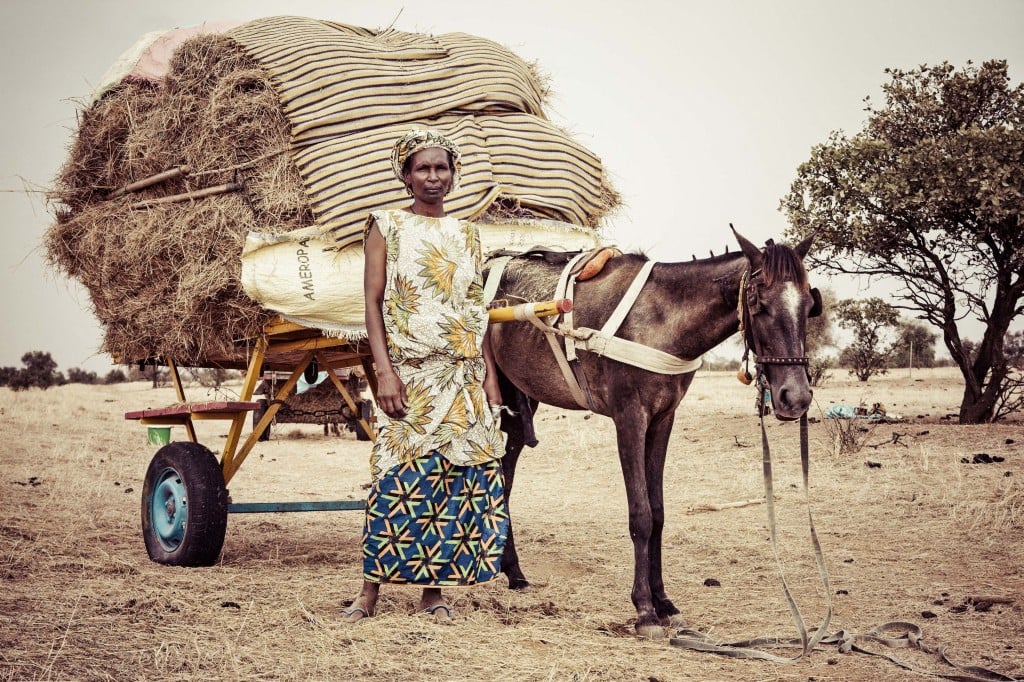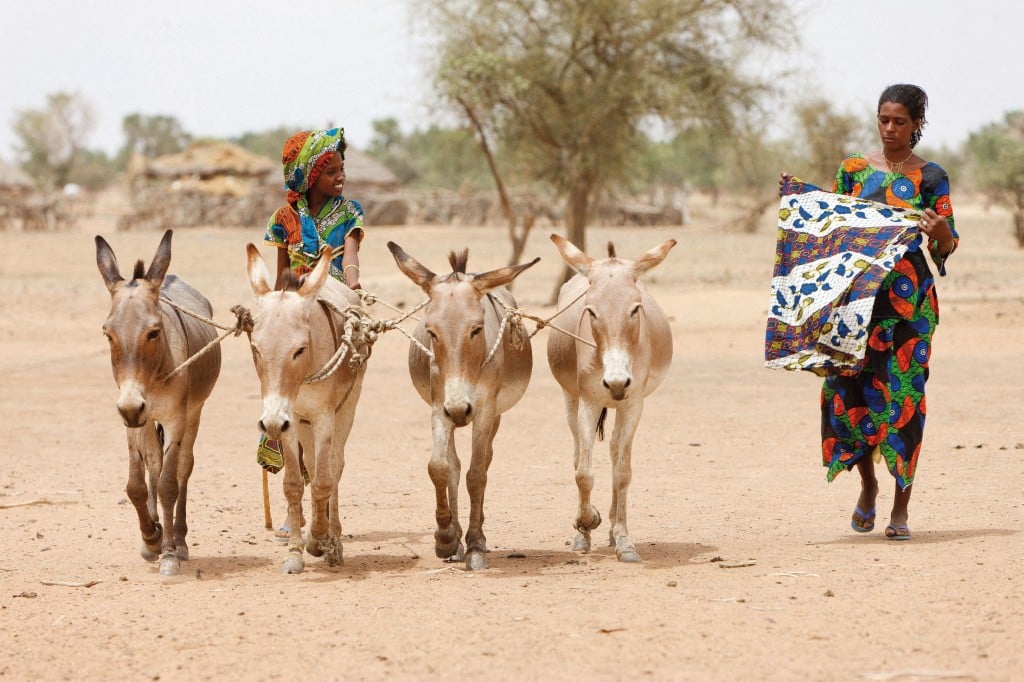
[Reportage] Le combat d’Awa Sow et les éleveuses du Ferlo pour leur survie
Beneath the rare shade of thorny acacia trees, in the arid savannahs of Ferlo, between Barkedji and Linguère, a handful of Fulani women strive to preserve a centuries-old tradition: milk production in a thirsty region. Through determination, innovation, and a fight against oblivion, they are waging a discreet but crucial battle in the face of climatic and social challenges. In this northeastern region of Senegal, where the scorching harmattan sweeps across a sea of yellowing grass, milk, much more than a food, embodies memory, subsistence, transmission, the economy, and motherhood. Yet this sector, carried on by women who are often invisible in agricultural reports, is threatened by drought, indifference, and a way of life that marginalizes them.
Awa Sow, guardian of herds and hope
In Barkedji, 30 kilometers from Linguère, Awa Alassane Sow, a respected figure in women's livestock farming, is busy near her enclosure. A cow scratches the ground in search of rare herbs, while children play among aluminum basins and empty milk containers. "Before, we sold milk every morning. Today, we have to wait for the animals to return from the transhumance, sometimes two to three months without a drop," she confides, gazing into the horizon.

Among the Fulani, milk management is a women's business. They milk, preserve, process, sell, and manage income, often supporting family expenses: school supplies, medical care, seeds, or debts. But this domestic and community economy is weakened by the seasonal exodus of herds, which has become almost permanent in some areas.
Milk taken away by transhumance
"We don't choose transhumance, we endure it," Awa Sow declares. The degradation of pastures, combined with the distance from watering holes, sometimes separated by dozens of kilometers, forces herders to migrate south – to Kaolack, Fatick, and even Gambia and Guinea. These movements disrupt communities: "When the men leave with the cows, the women stay. But without cows, there's no milk," she laments. The consequences are multiple: temporary closure of processing units, dropping out of school for children who have become herders, lack of medical follow-up for pregnant women, and undeclared newborns, leaving lives off the state's radar.
Dairy factory shuts down

At the entrance to Linguère, Aminata Ba manages a mini-dairy factory capable of processing up to 300 liters of milk per day. But this rate is rarely reached. "Sometimes, I barely receive 50 liters, brought by women from neighboring villages who carry their cans on foot," she explains. Solar electricity, insufficient to run the machines continuously, limits production. Aminata dreams of a high-voltage connection and a truck to collect milk from the hamlets. Without these, the milk, due to lack of preservation, spoils or is thrown away—an aberration in a country where child malnutrition remains endemic.
Innovations in the bush: fencing to survive
Faced with these challenges, women are innovating. In Barkedji, Awa Sow and her economic interest group (GIE) of livestock breeders have initiated a "protection" project: fenced plots to protect the grass from bushfires and trampling. They grow fodder cowpeas, nema (a hardy local plant), and grasses. "We cut, dry, and store them to feed the animals during the dry season," explains Awa. This 300 m² field school, irrigated by a mini-borehole, trains dozens of women every month. However, she recognizes the limitations: "It requires land, water, and fencing—resources that many don't have."
Land, a fight for women

In Linguère, access to land remains a major challenge, especially for women. Ibrahima Lo, assistant to Mayor Aly Ngouille Ndiaye, admits: "Few women dare to officially request land, but those who do, like Alarba Ba, are supported." The town hall, in partnership with the city of Angers and the Great Green Wall initiative, has developed 11 hectares of community gardens with water, fences, and seeds. But supply remains insufficient to meet demand.
A fragile improvement
According to a study by the French National Agency for the Development of Milk and Food Security (ANSD) (2022-2023), the Linguère department produced 261,429 liters of milk in 2023, a 93% increase compared to 2022, thanks to fodder crops, community initiatives, and local support. However, this growth remains precarious, threatened by water stress and land use conflicts.
Beyond economics, the milk crisis raises a human rights issue. In transhumance areas, women give birth without assistance, their children are neither registered nor vaccinated, and many do not have access to school. Three fundamental rights—health, identity, and education—are thus violated. Lacking mobile services and appropriate policies, these children of Ferlo remain invisible, even though the country relies on them for livestock farming.
Carrying the voices of Ferlo
At the Linguère market, women sell milk in plastic bags, alongside exported mangoes. They talk about their struggles, but also about their projects: cooperatives, innovations, pride. In the Ferlo, milk is an act of resistance, a cry to affirm: "We are here, we want to stay, we want to produce." But for this sector to become a true lever for the future, more than their determination will be needed. Water, electricity, trucks, cold storage, land, and a listening ear are necessary for these women's voices to carry beyond the dunes and silences, and for the milk of the Ferlo to not become a muffled cry.
Commentaires (16)
Laissant femmes et enfants dans une précarité totale, ils sont en migration permanente et souvent en conflit avec les agriculteurs qui les accusent de saccager leurs champs. Ce pastoralisme traditionnel est aujourd'hui incompatible avec les changements climatiques, l'explosion démographique et l'agriculture intensive. Ces éleveurs doivent avoir leurs terres aménagées, de l'eau, car le Sénégal en a assez, faire leur culture fourragère pour nourrir leur cheptel et produire suffisamment de lait et de viande pour tirer des revenus conséquents de leur dur labeur.
Voilà un sujet intéressant et d'actualité, qui remet sur la table les stratégies de résilience dans le Ferlo...
J'espère que le message sera capté surtout par les autorités
Je pense que mes parents peuls doivent changer leur mode de fonctionnement. Au lieu de parcourir des kilometers a la recherche des paturages pour des mois, pourquoi pas se sedentariser pres du fleuve walo et ngalanka pour mener a bien leurs activities, puis que l'eau ny sera pas un problem. Si ce sont les terres cultivables qui posent problem, l'etat doit prendre ses responsabilites et les aider dans l'acquisition de ses terres.
Espérons que des initiatives seront prises pour faciliter la vie à ces femmes et à leurs hommes.
Sinon, il me semble qu'il y a une petite coquille dans le texte: il est écrit "mangues exportées". Ne serait-ce pas "mangues importées"?
Participer à la Discussion
Règles de la communauté :
💡 Astuce : Utilisez des emojis depuis votre téléphone ou le module emoji ci-dessous. Cliquez sur GIF pour ajouter un GIF animé. Collez un lien X/Twitter ou TikTok pour l'afficher automatiquement.